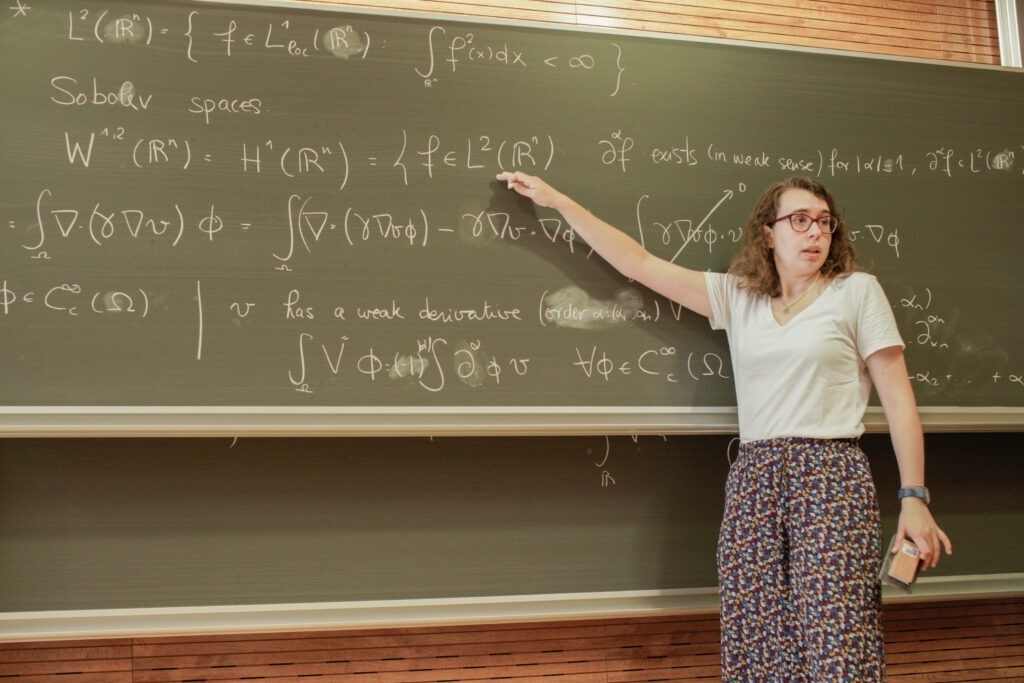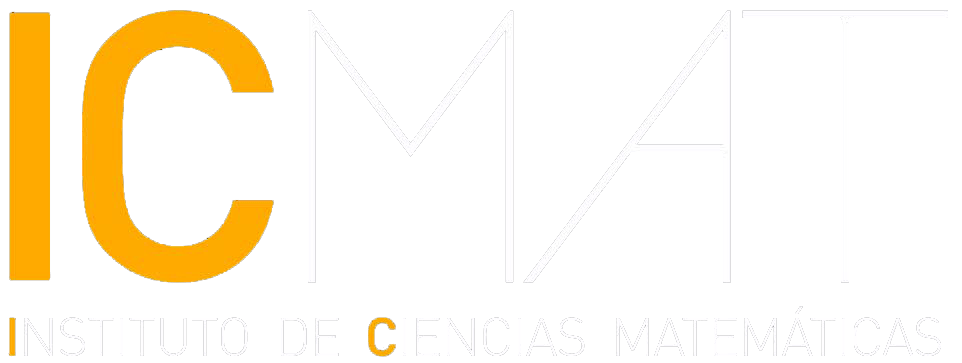The VI Joint Meeting between the Spanish Royal Mathematical Society (RSME) and the Mexican Mathematical Society (SMM) will take place in Valencia from July 1 to 5. Tomorrow, July 3 at 9:00 am, Mª Ángeles García Ferrero (ICMAT-CSIC) will give one of the nine plenary lectures of the event. In “Exceptional polynomials and how to find them”, she will present her latest work in the field of exceptional orthogonal polynomials.
Ágata Timón G Longoria (ICMAT)

Years ago, García-Ferrero was a student at the JAE School and this edition and the last, she participates as a professor. Image: Iñigo de Amescua/ ICMAT.
Mª Ángeles García Ferrero, one of the most outstanding young researchers in the field of mathematics and a tenured scientist of the Spanish National Research Council at the ICMAT, is one of the nine plenary lecturers at the 6th Joint Meeting between the Spanish Royal Mathematical Society (RSME) and the Mexican Mathematical Society (SMM). The event, which began last Monday and will last until Friday, brings together hundreds of mathematicians from these two countries in Valencia.
On Wednesday, July 3 at 9:00, García Ferrero will talk about exceptional orthogonal polynomials, which arise as eigenfunctions of Sturm-Liouville problems and form complete bases of quadratically integrable functions with weights. “However, unlike the classical Hermite, Laguerre and Jacobi polynomials, their degree sets omit a finite number of natural numbers,” says the mathematician. Since 2009, much progress has been made in research on their construction and properties, but it is a field in which there are many open questions.
Multi-award-winning mathematician
Mª Ángeles García Ferrero has recently joined the ICMAT faculty, following her obtaining a permanent position as a tenured scientist at the CSIC. In 2019 she won the José Luis Rubio de Francia prize, awarded by the Spanish Royal Mathematical Society (RSME) to the best young Spanish mathematician under the age of 32, and one of the 2019 Vicent Caselles prizes, awarded by the RSME and the BBVA Foundation to six promising young Spanish mathematicians (under the age of 30). In 2023 she was elected member of the Young Academy of the European Mathematical Society.
Her research is in the area of partial differential equations (PDEs) and their applications. The main focus of her current work is the study of inverse problems in PDEs, on which image reconstruction and medical diagnostic techniques are based. He has also contributed significantly to the area of orthogonal polynomials, also relevant in quantum mechanics, about which he will speak at the Valencia meeting.
Her scientific results are published in journals such as Duke Mathematical Journal or Journal de Mathématiques Pures et Appliquées and she has been invited to present them in more than fifty seminars and congresses. In addition, she actively collaborates in various outreach initiatives, especially preparing lectures and workshops for secondary and high school students.
With a degree in Physics from the University of Valladolid (2014), she completed her PhD at the ICMAT, under the direction of Alberto Enciso, which she defended in2018. Previously, she was a student at the JAE School of the ICMAT -of which, years later, she has also been a professor-. She has also been a postdoctoral researcher at the Max-Planck Institute for Mathematics in Leipzig (Germany), at the University of Heidelberg (Germany) and at the Basque Center for Applied Mathematics (BCAM) in Bilbao, as well as a lecturer at the University of Barcelona, before joining the ICMAT.
“Exceptional polynomials and how to find them”, by Mª Ángeles García Ferrero
Abstract
Exceptional orthogonal polynomials arise as eigenfunctions of Sturm-Liouville problems and form complete bases in of square integrable functions with weights. Nevertheless, contrary to the classical polynomials of Hermite, Laguerre and Jacobi, their sets of degrees miss finitely many natural numbers. Since 2009, many pages have been written about their constriction and their properties, but the book is still unfinished. In this talk, we will summarize the introductory chapters on exceptional orthogonal polynomials, focusing on their construction via Darboux transformations. We will also review some of the last lines added to the narrative in the direction of achieving their full classification. This is based on joint works with D. Gómez-Ullate and R. Milson.
This content has been automatically translated. The original text may differ slightly.
